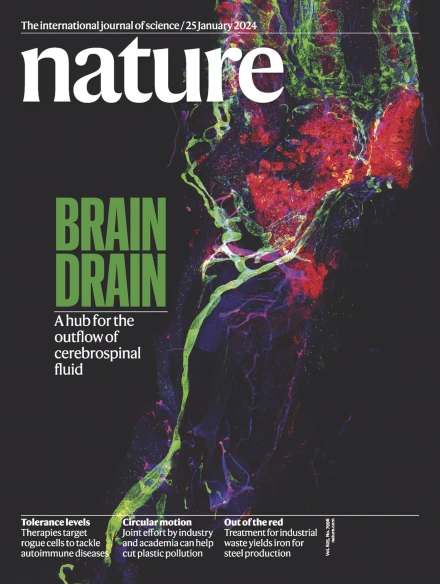无冷却红外探测外延膜的原子升空
IF 48.5
1区 综合性期刊
Q1 MULTIDISCIPLINARY SCIENCES
引用次数: 0
摘要
最近在超薄、单晶、独立复杂氧化物系统方面的突破激发了业界对其下一代商业设备潜力的兴趣1,2。然而,这些超薄复合氧化膜的大规模生产一直受到在脱毛层和衬底之间插入人工释放层这一挑战性要求的阻碍。在这里,我们介绍了一种技术,可以实现超薄膜的原子精度提升,而不需要人工释放层,以促进可扩展的、超薄的、独立的钙钛矿系统的高通量生产。利用理论见解和经验证据,我们已经确定了铅在削弱界面中的关键作用。这一见解导致了一种通用剥离策略的创建,使各种小于10纳米的超薄钙钛矿膜的生产成为可能。我们的热释电膜显示出创纪录的高热释电系数,为1.76 × 10−2 cm−2 K−1,这归功于它们异常低的厚度和独立的性质。此外,这种方法提供了一种制造可以覆盖整个远红外光谱的无冷却探测器的方法,标志着探测器技术的显著进步。本文章由计算机程序翻译,如有差异,请以英文原文为准。


Atomic lift-off of epitaxial membranes for cooling-free infrared detection
Recent breakthroughs in ultrathin, single-crystalline, freestanding complex oxide systems have sparked industry interest in their potential for next-generation commercial devices1,2. However, the mass production of these ultrathin complex oxide membranes has been hindered by the challenging requirement of inserting an artificial release layer between the epilayers and substrates3,4. Here we introduce a technique that achieves atomic precision lift-off of ultrathin membranes without artificial release layers to facilitate the high-throughput production of scalable, ultrathin, freestanding perovskite systems. Leveraging both theoretical insights and empirical evidence, we have identified the pivotal role of lead in weakening the interface. This insight has led to the creation of a universal exfoliation strategy that enables the production of diverse ultrathin perovskite membranes less than 10 nm. Our pyroelectric membranes demonstrate a record-high pyroelectric coefficient of 1.76 × 10−2 C m−2 K−1, attributed to their exceptionally low thickness and freestanding nature. Moreover, this method offers an approach to manufacturing cooling-free detectors that can cover the full far-infrared spectrum, marking a notable advancement in detector technology5. Atomic precision lift-off of ultrathin membranes without artificial release layers can be achieved to facilitate the high-throughput production of scalable, ultrathin, single-crystalline, freestanding perovskite systems.
求助全文
通过发布文献求助,成功后即可免费获取论文全文。
去求助
来源期刊

Nature
综合性期刊-综合性期刊
CiteScore
90.00
自引率
1.20%
发文量
3652
审稿时长
3 months
期刊介绍:
Nature is a prestigious international journal that publishes peer-reviewed research in various scientific and technological fields. The selection of articles is based on criteria such as originality, importance, interdisciplinary relevance, timeliness, accessibility, elegance, and surprising conclusions. In addition to showcasing significant scientific advances, Nature delivers rapid, authoritative, insightful news, and interpretation of current and upcoming trends impacting science, scientists, and the broader public. The journal serves a dual purpose: firstly, to promptly share noteworthy scientific advances and foster discussions among scientists, and secondly, to ensure the swift dissemination of scientific results globally, emphasizing their significance for knowledge, culture, and daily life.
 求助内容:
求助内容: 应助结果提醒方式:
应助结果提醒方式:


